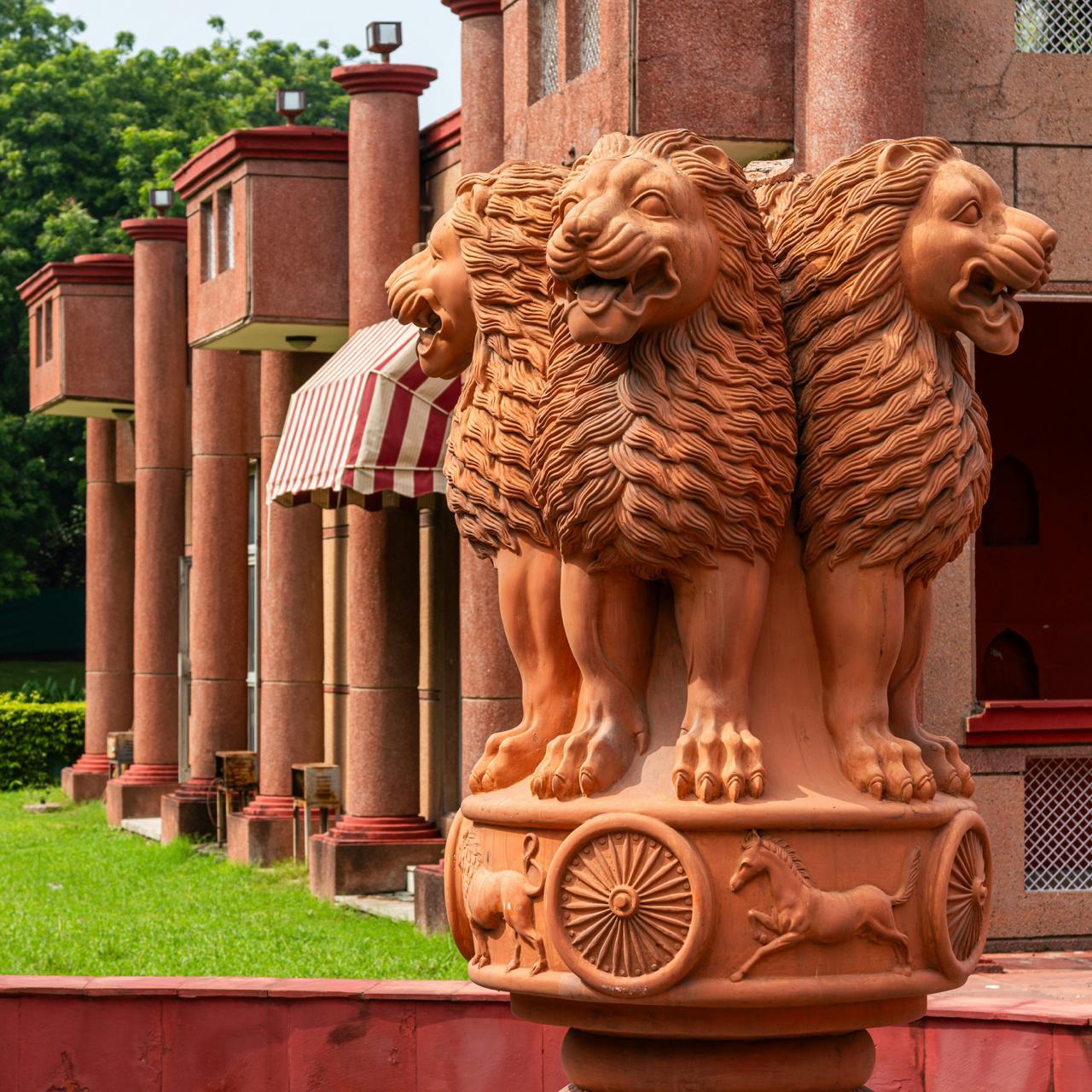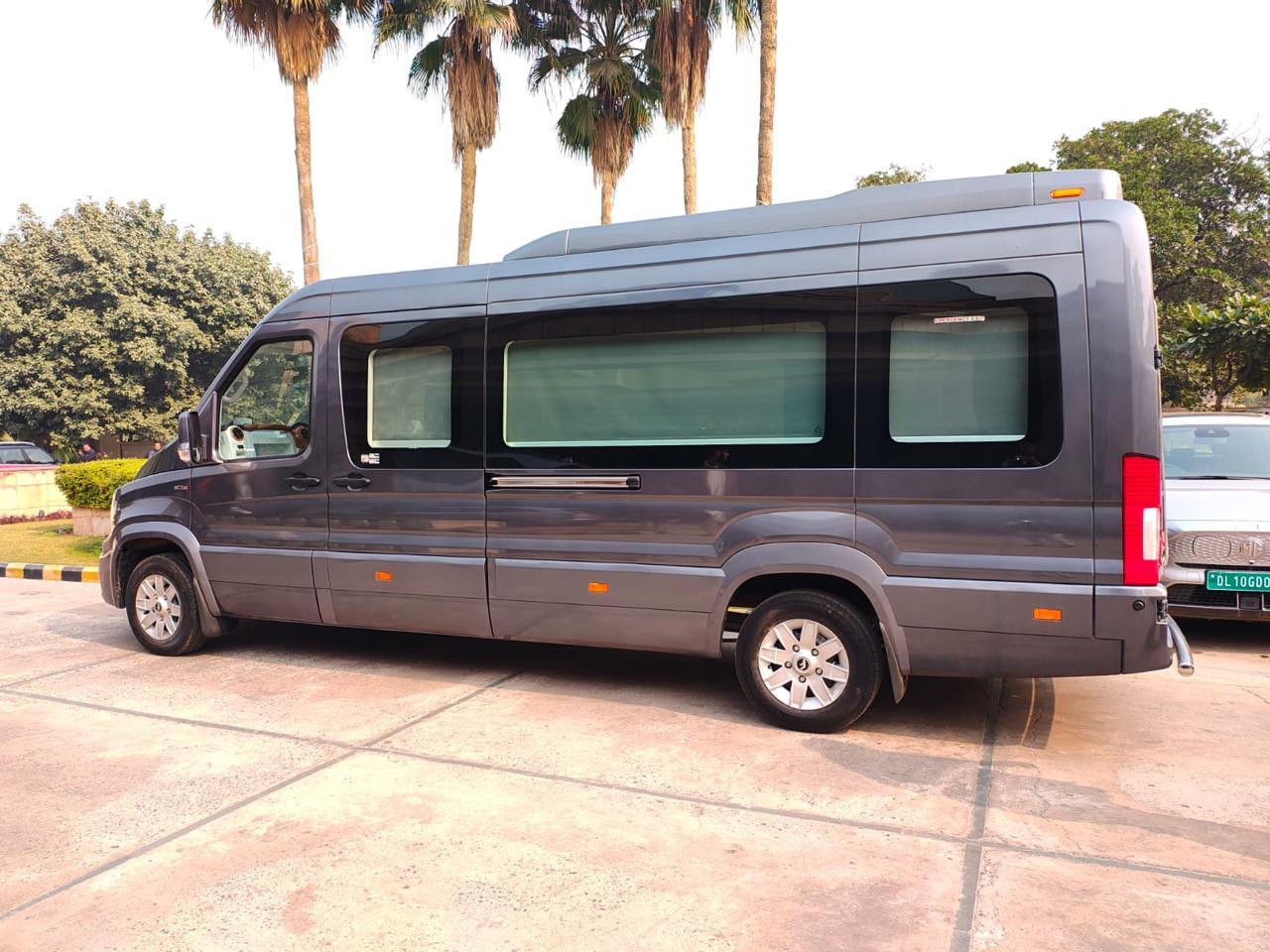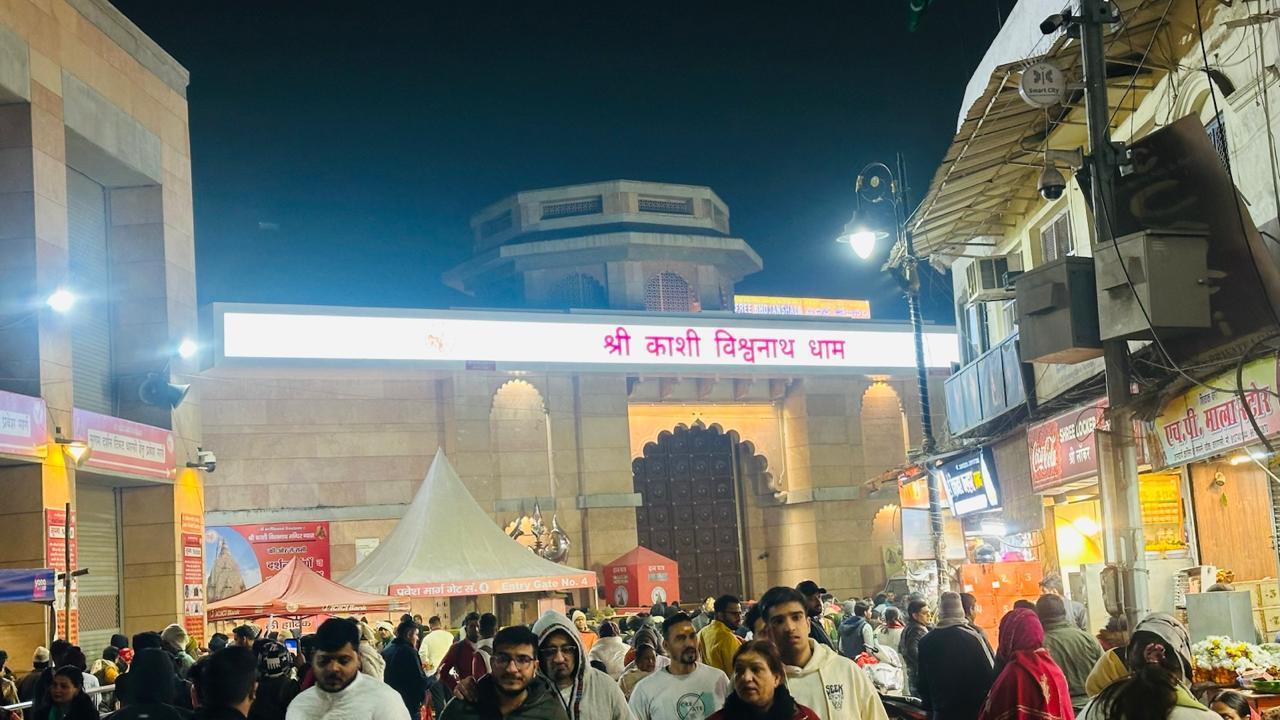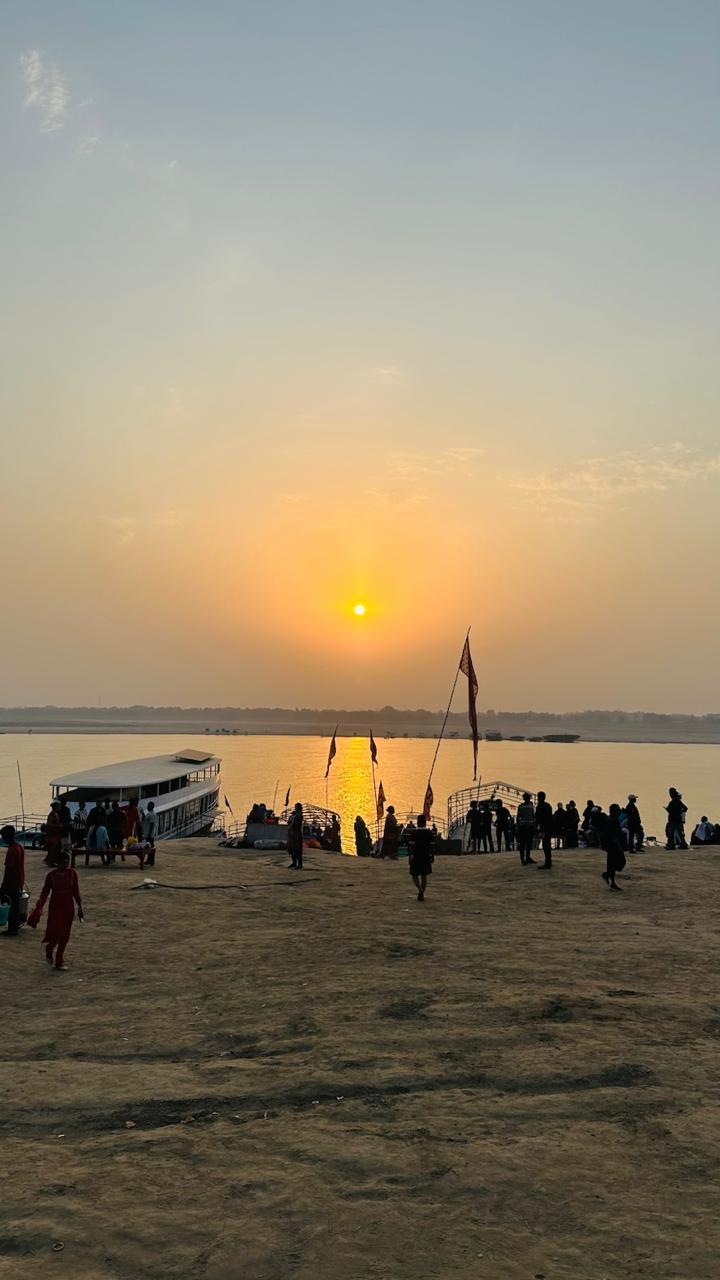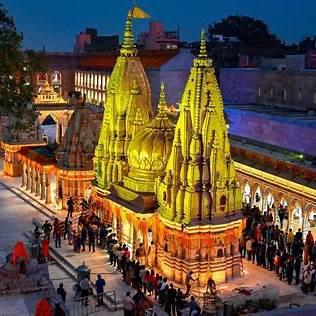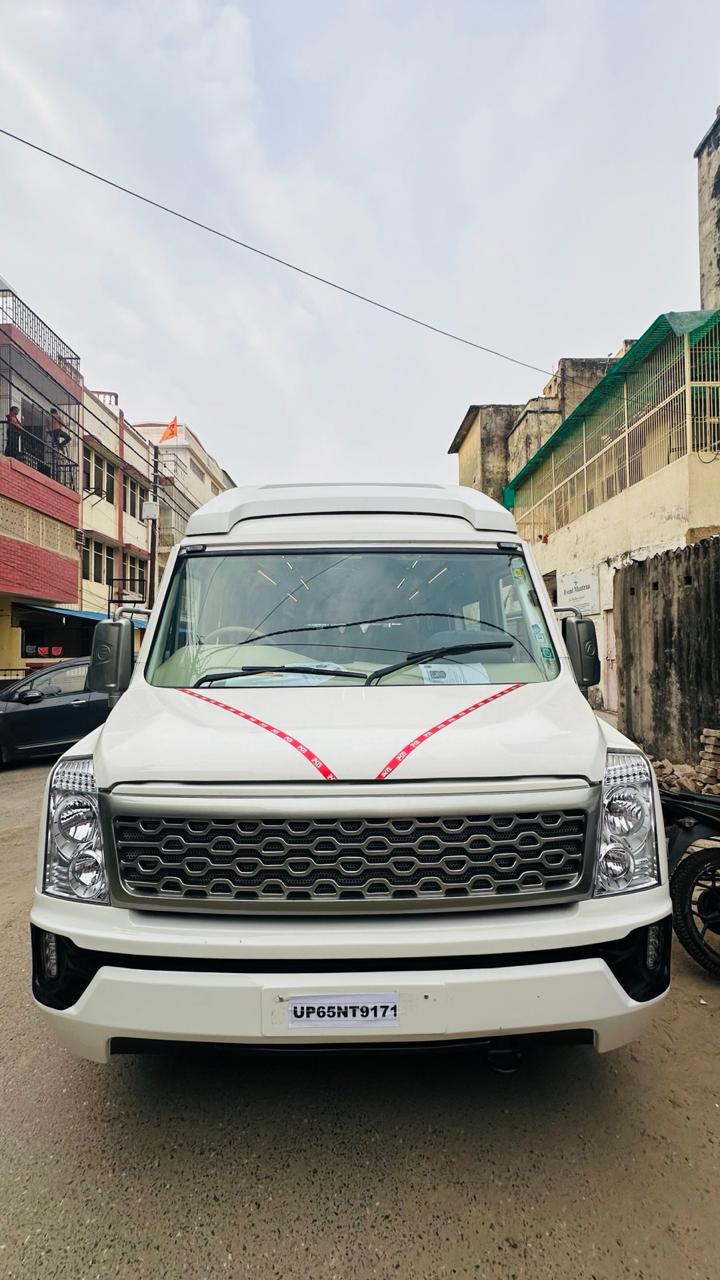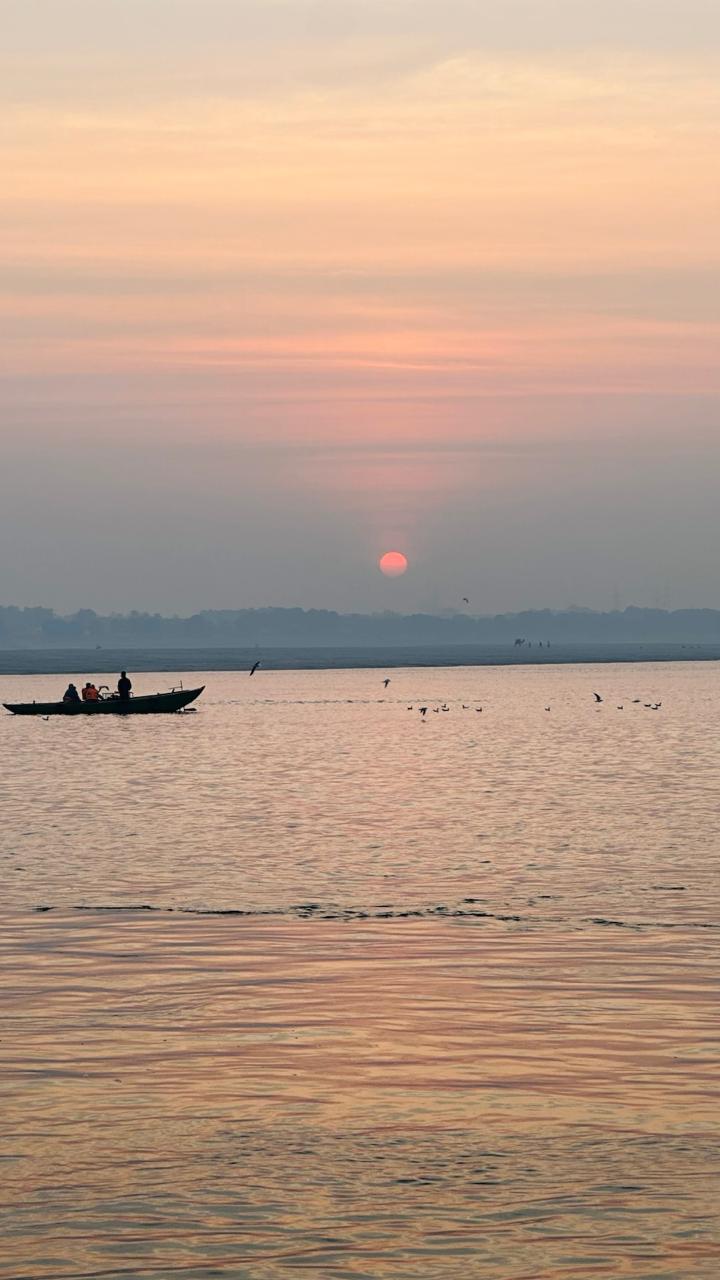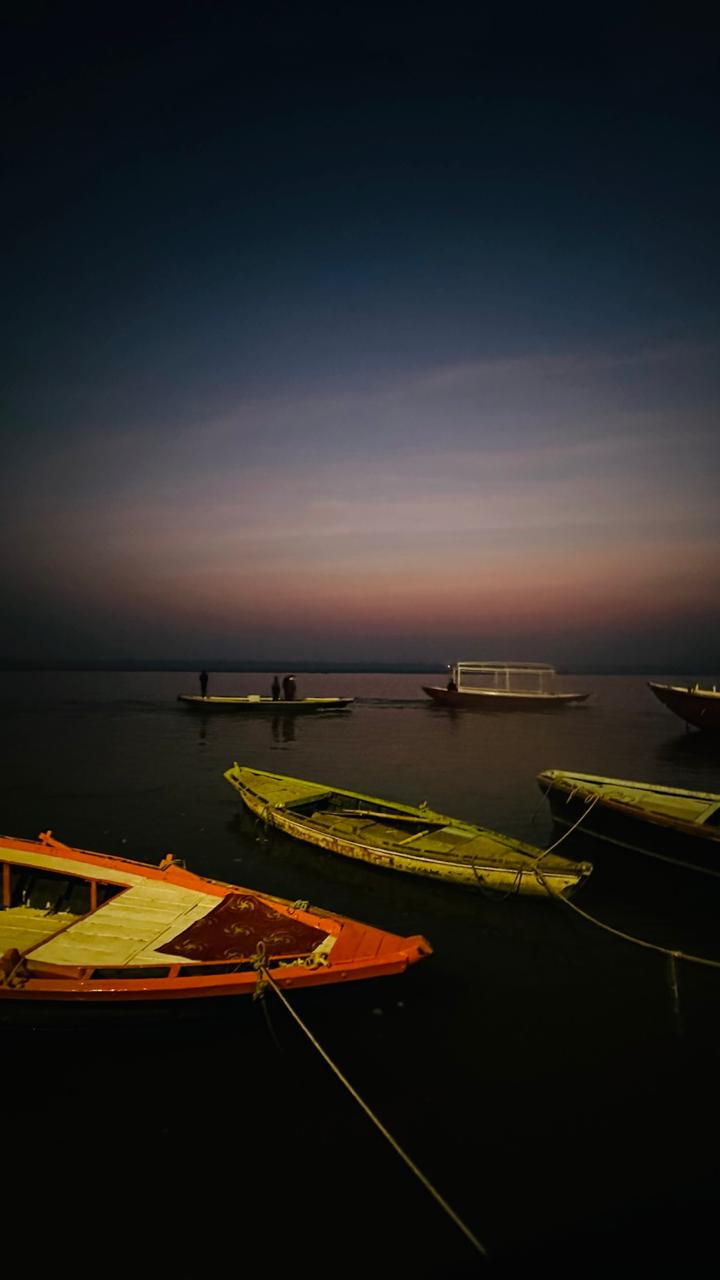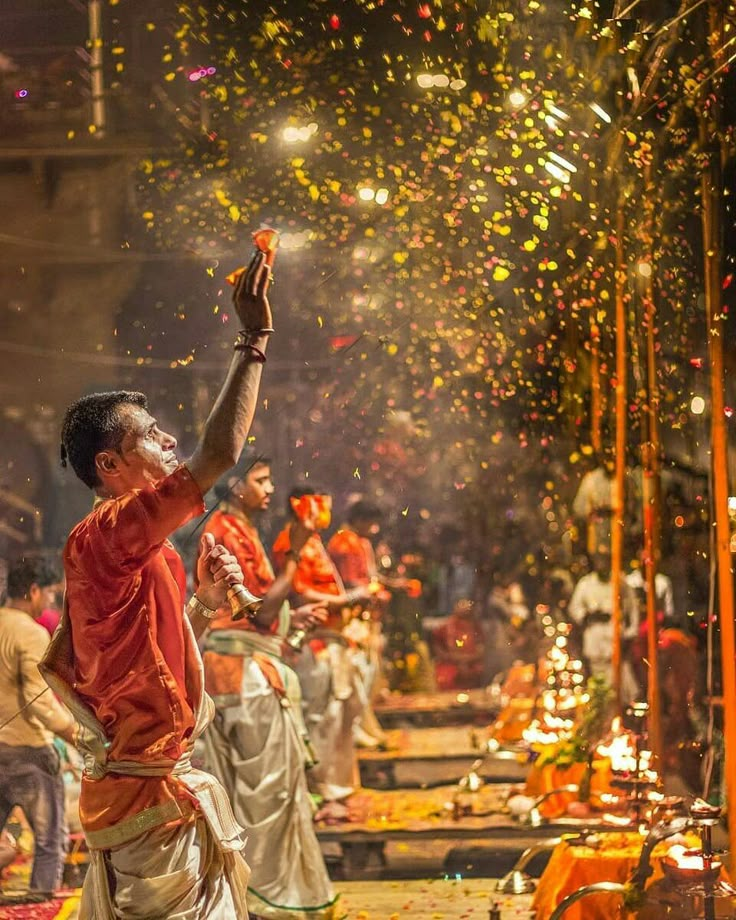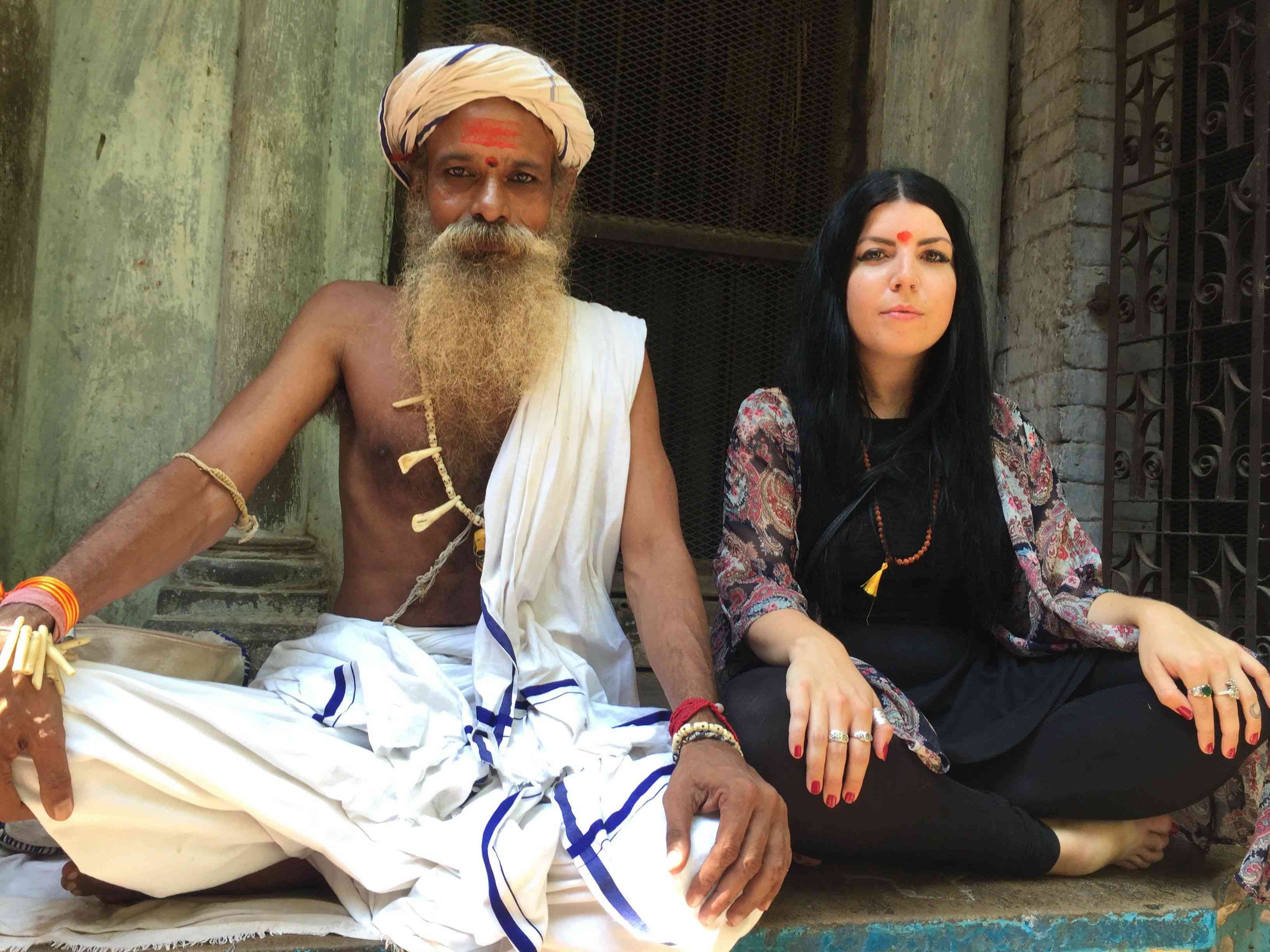Sarnath Temple & Buddhist Pilgrimage Guide 2025: Ashoka Pillar, Stupa Timing & Main Attractions
TL;DR: Sarnath temple complex, 10 km from Varanasi, houses the iconic Dhamek Stupa (43.6m high) and original Ashoka Pillar Sarnath location where Buddha gave his first sermon in 528 BCE. Sarnath timing: Site 6 AM-6 PM daily; Museum 9 AM-5 PM (closed Fridays). Entry: ₹20-250 combo ticket. Must-see Sarnath attractions: Ashok Stambh with Lion Capital (India's emblem), Sarnath Buddhist temples (Mulagandha Kuti Vihar), Archaeological Museum. Taxi from Varanasi: ₹300-500 (30 mins). Best time for Sarnath visit: October-March.
Sarnath stands as one of Buddhism's four most sacred pilgrimage sites, alongside Lumbini (Buddha's birthplace), Bodh Gaya (enlightenment site), and Kushinagar (Mahaparinirvana site). Located just 10-13 kilometers from Varanasi, this ancient Sarnath temple complex marks where Gautama Buddha delivered his momentous first sermon—the Dhammacakkappavattana or "Turning the Wheel of Dharma"—setting in motion one of the world's great spiritual traditions over 2,500 years ago.
This comprehensive Sarnath visit guide covers everything you need to know about visiting Sarnath attractions, from the magnificent Dhamek Stupa and historic original Sarnath pillar (Ashoka Pillar) to Sarnath Buddhist temples, museum treasures, practical Sarnath timing, and transport options from Varanasi.
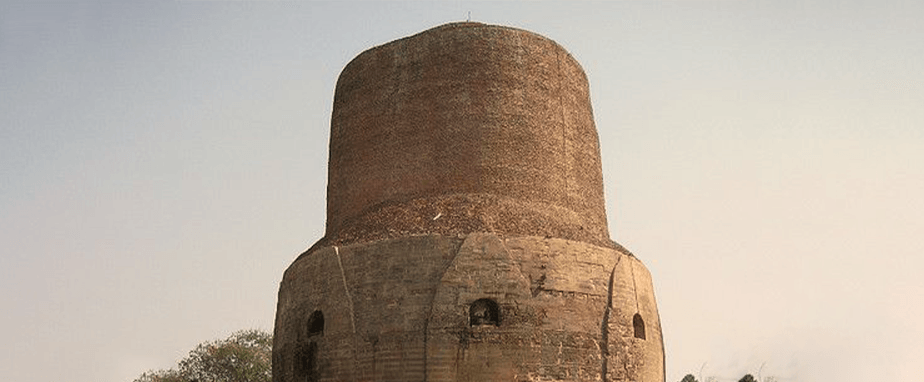
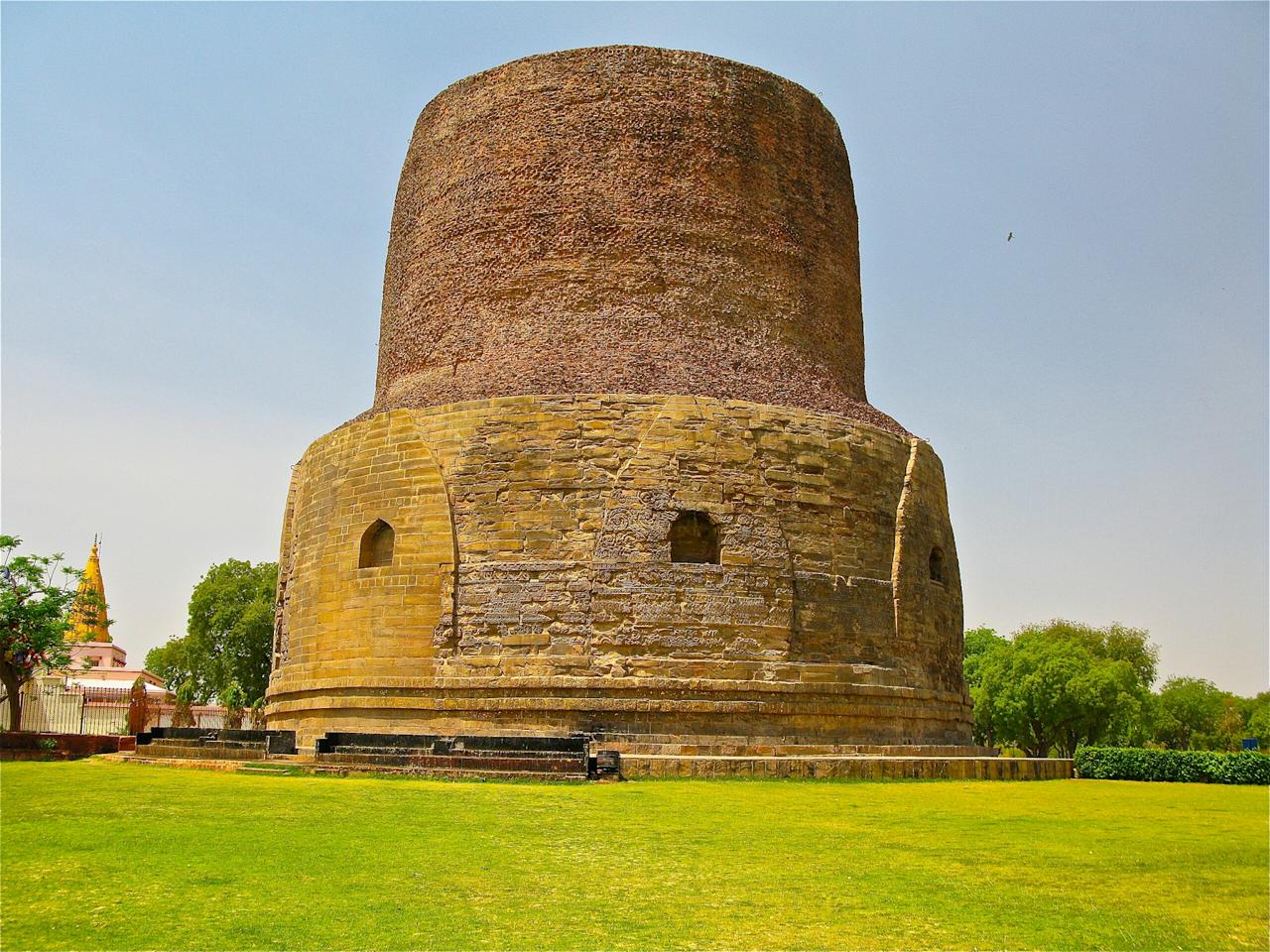
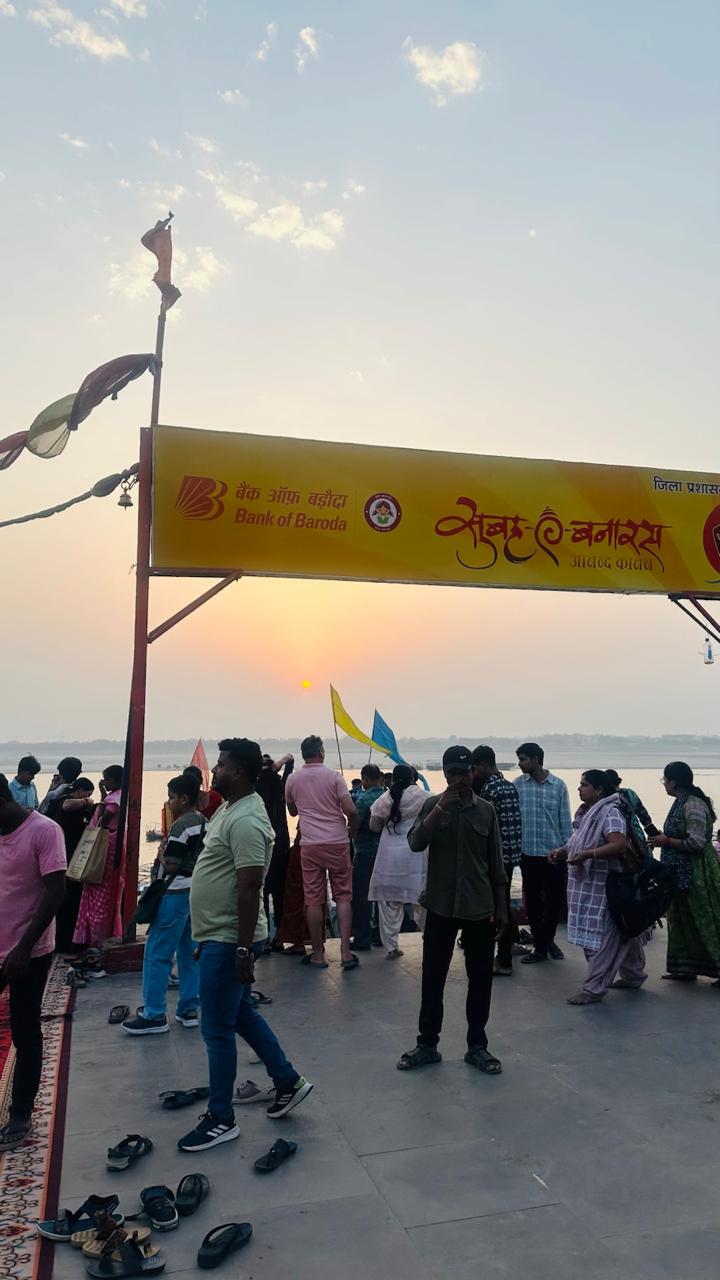
Historical & Spiritual Significance of Sarnath
Buddha's First Sermon at Sarnath
Around 528 BCE, following his enlightenment at Bodh Gaya, Gautama Buddha walked nearly 250 kilometers to reach the ancient Deer Park (Mrigadava) at Sarnath. Here, he reunited with five ascetic disciples—Kondanna, Mahanama, Bhaddiya, Vappa, and Assaji—who had previously abandoned him when he rejected extreme asceticism.
In this peaceful grove, Buddha delivered his first sermon introducing the foundational Four Noble Truths and the Eightfold Path, revolutionary teachings that would guide countless followers toward enlightenment. This discourse established the first Buddhist Sangha (monastic community), making Sarnath the birthplace of Buddhism as an organized religion.
The name "Sarnath" derives from "Sāranganātha" meaning "Lord of the Deer," referencing a Buddhist Jataka tale about a compassionate deer-Bodhisattva who sacrificed himself to save his herd.
Emperor Ashoka's Patronage
In 249 BCE, the great Mauryan Emperor Ashoka—Buddhism's most influential royal patron—visited Sarnath and erected magnificent monuments including the original Dhamek Stupa foundation and the iconic polished sandstone pillar topped with the Lion Capital. These structures transformed Sarnath into a thriving Buddhist center that flourished for over 1,500 years.
Chinese Buddhist pilgrim Xuanzang documented in 640 CE that Sarnath housed over 1,500 monks and the main stupa stood nearly 300 feet (91 meters) high. The site prospered until Turkish invasions of the 12th century devastated most structures, leaving Sarnath in ruins for nearly a millennium.
Modern archaeological excavations beginning in 1815 unearthed treasures that revealed Sarnath's glorious past, leading to its designation on UNESCO's tentative World Heritage list since 1998.
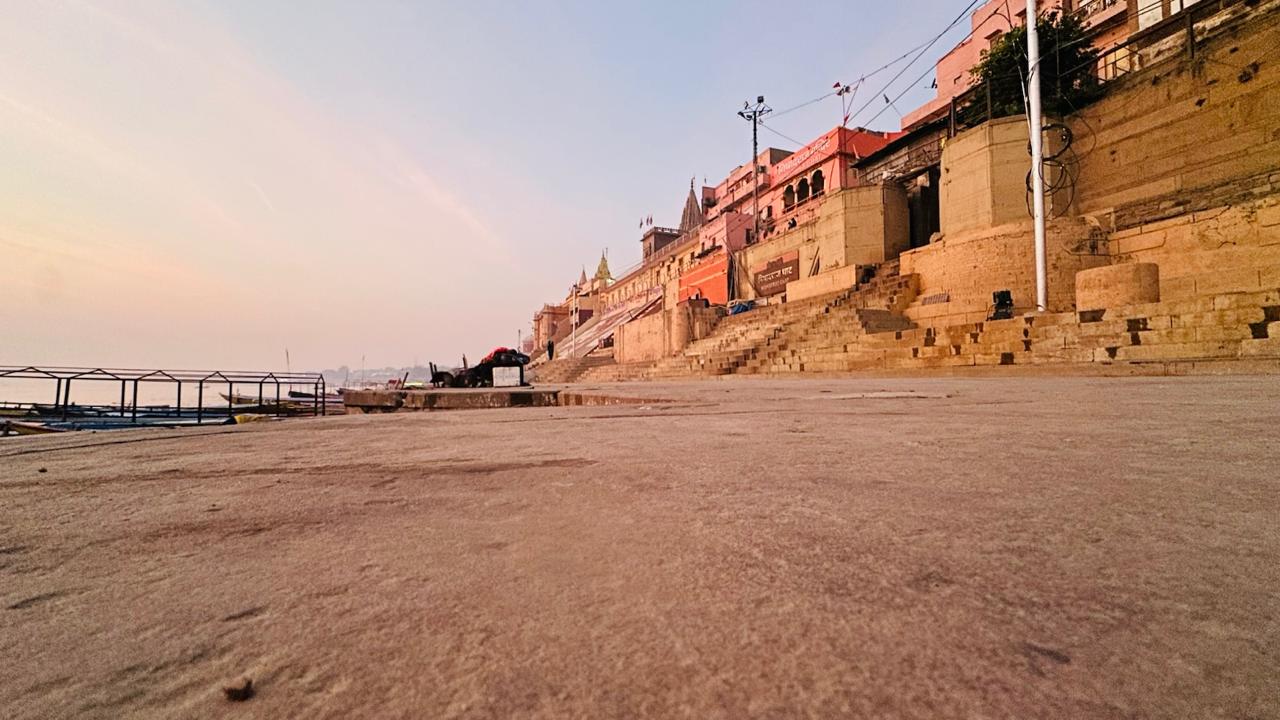
Dhamek Stupa at Sarnath: Sacred Monument of Buddha's First Sermon


Architecture & Design of Dhamek Stupa
The Dhamek Stupa is Sarnath's most massive and iconic structure, marking the precise location where Buddha delivered his first sermon. This impressive cylindrical monument stands 43.6 meters (143 feet) high with a diameter of 28 meters (92 feet) at its base, creating a striking architectural presence visible from afar.
Construction History:
The stupa's construction reveals fascinating historical layers:
- 249 BCE: Emperor Ashoka built the original foundation
- 500 CE: Reconstructed during the Gupta period in its current form
- Architecture: Solid brick and stone cylindrical structure
- Features: Contains eight niches facing different directions (likely housed Buddha images)
- Expansions: Underwent six major renovations over centuries
The name "Dhamek" derives from "Dharma Chakra" (Wheel of Dharma), symbolizing the wheel of Buddhist teachings set in motion at this sacred location.
Intricate Stone Carvings
The lower portion of the Dhamek Stupa showcases exquisite Gupta-era stone carvings that survived centuries:
- Floral Patterns: Beautifully carved geometric and floral designs covering the basement
- Human Figures: Delicate carvings of human forms
- Bird Sculptures: Intricate bird figures adorning the walls
- Ancient Inscriptions: Brahmi script inscriptions on stone panels
- Decorative Bands: Multiple layers of ornamental stone bands
The upper section remains unfinished brick work, creating an interesting contrast between the polished carved stone base and weathered brick upper portion—a testament to 1,500+ years of survival.
Visiting Dhamek Stupa
Location: Center of Sarnath archaeological complex
Best Time: Early morning (6:00-8:00 AM) for peaceful atmosphere and soft light ideal for photography
What to Do:
- Circumambulate (walk clockwise around) the stupa—Buddhist pilgrims' traditional practice
- Study the intricate stone carvings at the base
- Photograph from multiple angles to capture its grandeur
- Sit in the surrounding gardens for meditation and contemplation
- Observe the contrast between ancient carved stones and weathered bricks
Photography: Allowed with ₹25 camera fee
Spiritual Experience: Buddhist pilgrims from Thailand, Japan, Sri Lanka, Tibet, and worldwide visit to offer prayers and incense, creating a profoundly spiritual atmosphere.
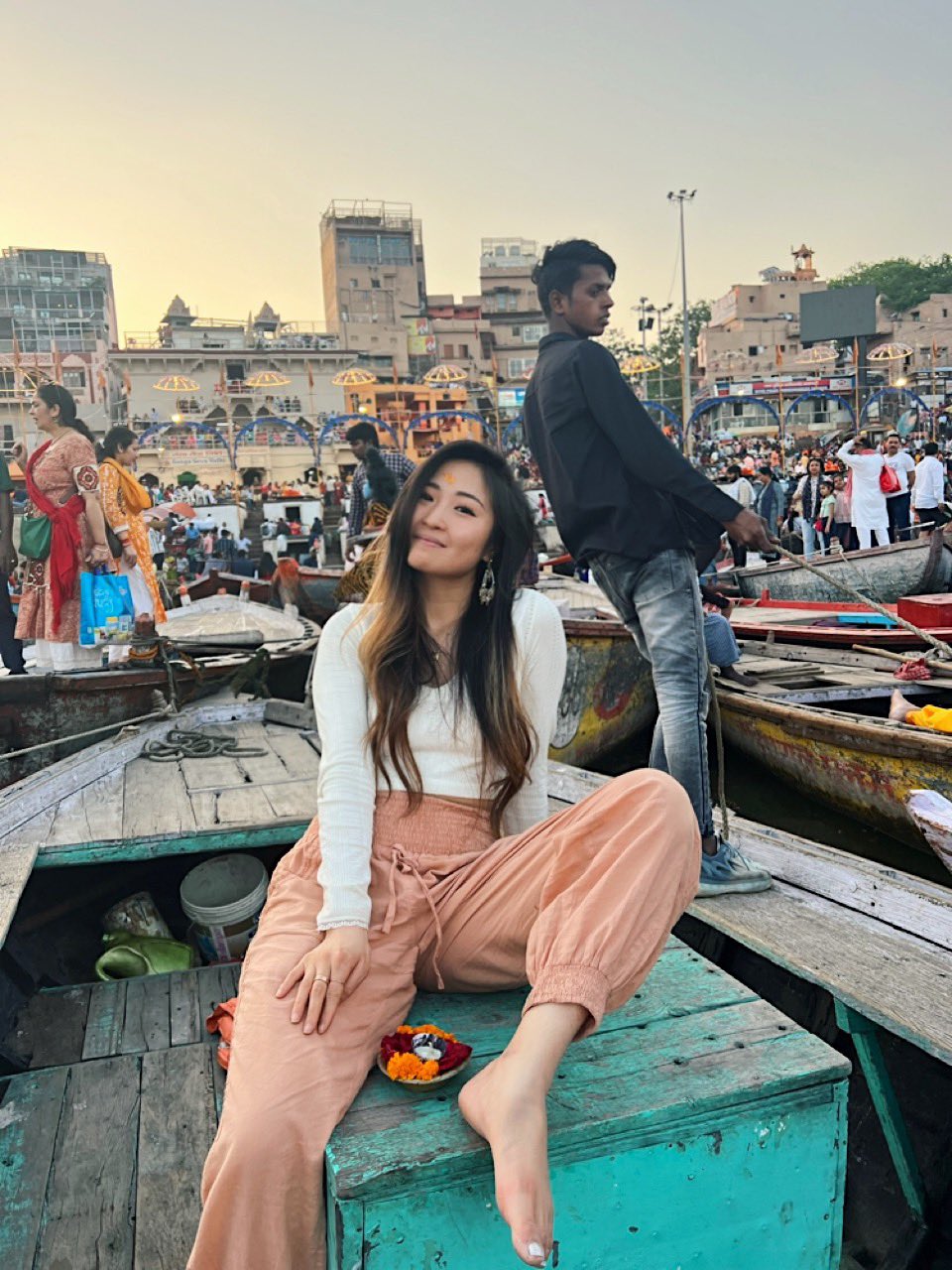

🙏 Experience Sacred Sarnath with Kashi Taxi
Following Buddha's footsteps requires peaceful, respectful transport. Our drivers understand the spiritual nature of your Sarnath pilgrimage—arriving on time for morning prayers, waiting patiently during meditation, and respecting the sacred atmosphere.
Buddhist Pilgrim Specials:
- Half-Day Sarnath: ₹600-1,200 (4 hours)
- Full-Day Varanasi + Sarnath: ₹2,500-3,500 (sunrise boat + temples + Sarnath + evening aarti)
- Buddhist Circuit (Sarnath + Bodh Gaya + Kushinagar): ₹18,000-45,000 (3-5 days)
What Buddhist Pilgrims Love:
✅ Early morning departures for sunrise visits
✅ Drivers familiar with temple timings and protocols
✅ Clean vehicles (remove shoes comfortably)
✅ Quiet, respectful service during spiritual moments
✅ Connections to licensed English/Japanese/Thai guides
✅ Multi-day circuit expertise (hotels, permits, routes)
📱 WhatsApp "SARNATH PILGRIMAGE": +91 94503 01573
📞 Call for Buddhist Circuit Quote: +91 94503 01573
27+ Years Serving International Buddhist Pilgrims | 4.8★ Rated | Japanese, Thai, Tibetan Client References Available
Complete guide: Buddhist Circuit Tour from Varanasi
Ashoka Pillar at Sarnath: India's National Emblem & Original Sarnath Stambh

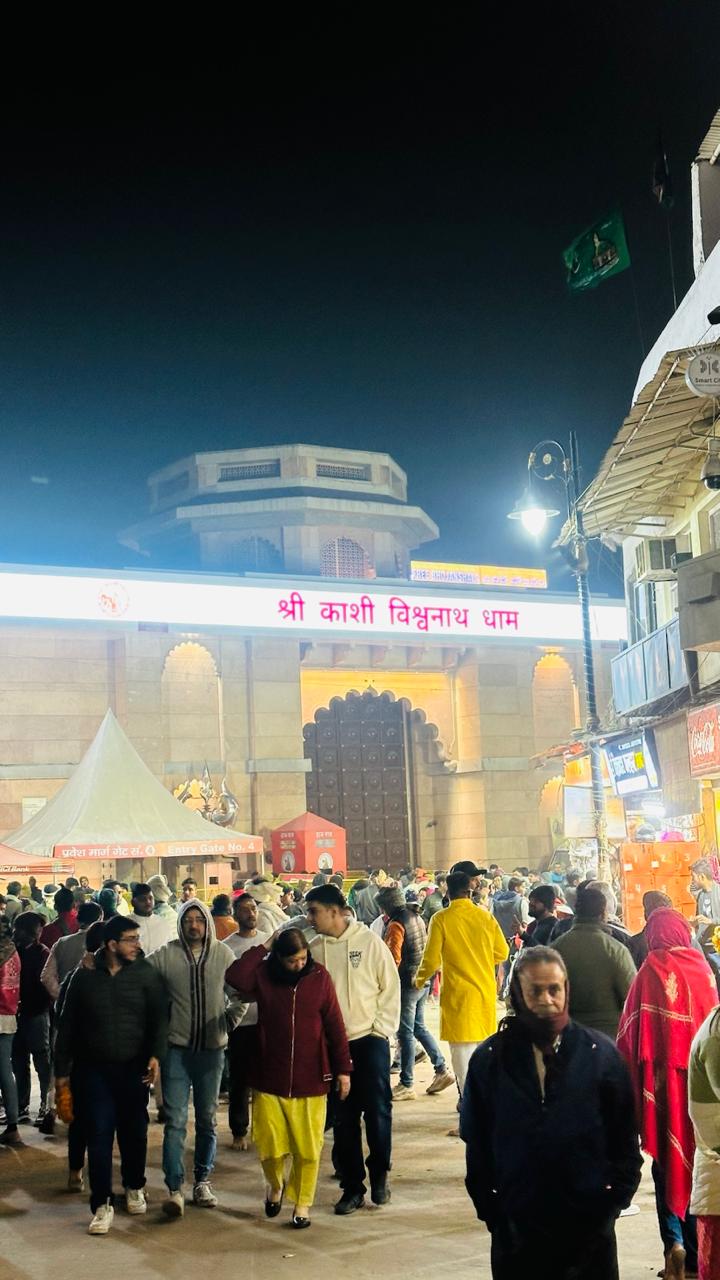
The Famous Lion Capital on Original Sarnath Pillar
The Ashoka Pillar Sarnath (also called Ashok Stambh Sarnath) originally supported the most famous sculpture in Indian history—the Lion Capital—carved around 250 BCE from a single block of highly polished Chunar sandstone. This is the original Sarnath pillar erected by Emperor Ashoka himself.
Lion Capital Features:
- Height: 2.1 meters (7 feet) tall
- Design: Four majestic Asiatic lions seated back-to-back
- Abacus: Circular base decorated with horse, bull, elephant, and lion figures separated by Dharmachakras (wheels of law)
- Wheel: The Ashoka Chakra (24-spoke wheel) from the capital's base now appears on India's national flag
- Symbolism: Lions represent power, courage, and Buddha's teaching spreading in four directions
- Craftsmanship: Mirror-polish achieved through advanced ancient techniques
This magnificent sculpture was adopted as India's National Emblem in 1950, appearing on currency, passports, government documents, and official seals.
Ashoka Pillar Inscription & Edicts on Original Sarnath Stambh
Though broken during 12th-century Turkish invasions, the inscribed Sarnath pillar shaft (original Ashok Stambh) remains at its original location near the Dhamek Stupa, still bearing Emperor Ashoka's edicts.
Sarnath Pillar Specifications:
- Material: Highly polished Chunar sandstone
- Original Height: Estimated 15-20 meters
- Current Condition: Broken shaft remains in situ (original position)
- Inscriptions: Brahmi script edicts about Buddhist teachings
- Content: Ashoka's proclamations prohibiting schism in Buddhist community
- Significance: One of the earliest examples of written Sanskrit
Historical Importance:
The Ashoka Pillar Sarnath (Ashok Stambh) represents Emperor Ashoka's commitment to spreading Buddhism after his transformation from a warrior to a dharma-following monarch. His edicts promoted non-violence, religious tolerance, and ethical conduct—revolutionary concepts for 3rd century BCE.
Viewing Ashoka Pillar & Lion Capital - Original Sarnath Pillar Locations
Sarnath Pillar Shaft Location: In the main archaeological complex near Dhamek Stupa (free with site entry) - This is the original Sarnath pillar (Ashok Stambh) in its authentic location
Lion Capital Location: Sarnath Archaeological Museum (separate entry required)
Photography: Sarnath pillar shaft can be photographed outdoors; Lion Capital photography prohibited inside museum
Best Experience for Sarnath Visit: Visit the original Sarnath pillar shaft first to understand its historical context, then see the Lion Capital in the climate-controlled museum to appreciate its intricate craftsmanship up close.
Need help planning your visit? Text "SARNATH TIMING" to +91 94503 01573 on WhatsApp for personalized itinerary suggestions based on your schedule.
Sarnath Archaeological Museum: India's Buddhist Treasure House

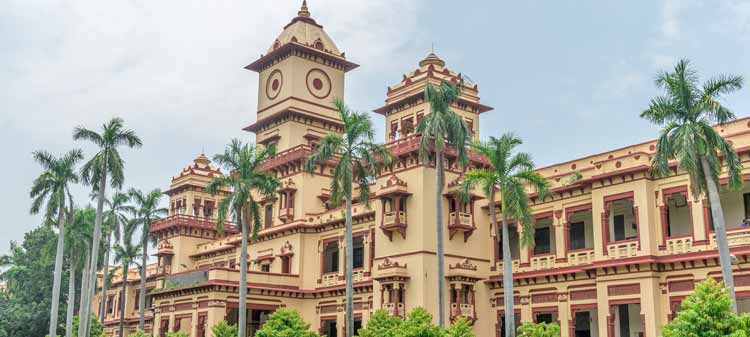
Museum History & Significance
Established in 1910, the Sarnath Archaeological Museum is India's first site museum and houses one of the world's finest collections of Buddhist art and artifacts. The collection spans from the 3rd century BCE to the 12th century CE, showcasing the evolution of Buddhist sculpture and architecture.
The museum was designed following the pattern of a traditional Buddhist monastery (Sangharam), with five galleries and two verandahs displaying 6,832 artifacts in chronological order.
Must-See Exhibits at Sarnath Museum
1. Lion Capital of Ashoka (India's National Emblem)
The museum's crown jewel and most famous exhibit. This 2.1-meter-tall sculpture of four lions atop an elaborately carved abacus is displayed in a specially lit gallery, allowing 360-degree viewing. The mirror-polish on the 2,250-year-old sandstone remains visible, demonstrating ancient India's advanced craftsmanship.
2. Buddha Preaching His First Sermon
A masterpiece of 5th-century Gupta period art from the Sarnath school. This standing Buddha sculpture depicts Buddha in the dharmachakra pravartana mudra (teaching posture), with hands positioned to symbolize turning the wheel of dharma. Considered one of the finest representations of Buddha in Indian art.
3. Dharmachakra (Dharma Wheel)
An intricately carved stone wheel from the base of the Ashoka Pillar, featuring 24 spokes. This wheel became the central motif on India's national flag, representing the eternal cycle of dharma (righteous law).
4. Extensive Buddha & Bodhisattva Collection
- 5th-century standing Buddha with sublime facial expressions
- Various seated Buddha images in different mudras (hand gestures)
- Life-size standing Bodhisattva holding lotus
- Buddha images from Mauryan, Kushana, and Gupta periods
- Teaching Buddha, meditating Buddha, and reclining Buddha sculptures
5. Hindu Deity Sculptures (9th-12th Century)
Evidence of Sarnath's later Hindu influence, with sculptures of Shiva, Vishnu, Ganesha, and other deities from the medieval period.
6. Architectural Fragments
Decorated pillars, railings, gateways, and capitals from ancient monasteries and stupas, showing architectural evolution over centuries.
7. Coins, Seals & Inscriptions
Ancient coins from various dynasties, inscribed stone tablets, and seals providing historical documentation of Sarnath's prosperity.
Sarnath Museum Timings and Entry Fees
Museum Timings (2025):
- Opening: 9:00 AM
- Closing: 5:00 PM (last entry 4:30 PM)
- Weekly Closure: Every Friday
- National Holidays: Closed on major Indian holidays
Entry Fees:
- Museum Only: ₹5 for Indians; ₹100 for foreigners
- Children under 15: Free
- Students (with valid ID): Discounted rates available
- Combo Ticket (Museum + Archaeological Site): ₹20 for Indians/SAARC/BIMSTEC; ₹250 for other foreigners
- Still Camera: ₹25 additional (video cameras not allowed inside galleries)
Important Notes:
- The outdoor archaeological site remains open on Fridays (sunrise to sunset)
- Photography NOT permitted inside museum galleries
- Photography allowed in outdoor excavation areas
- Audio guides available in multiple languages (additional fee)
- Bags must be deposited at cloakroom
Recommended Visit Duration: 60-90 minutes to properly appreciate major exhibits
Best Time: Visit museum during 9:00-11:00 AM to avoid afternoon crowds and heat
Sarnath Buddhist Temples: International Spiritual Centers & Main Sarnath Temple



Mulagandha Kuti Vihar: Main Sarnath Temple & Primary Sarnath Buddhist Temple
The Mulagandha Kuti Vihar is Sarnath's most important modern Sarnath Buddhist temple, built in 1931 by Anagarika Dharmapala, founder of the Mahabodhi Society. This is the main Sarnath temple for Buddhist worship and pilgrimage. The name means "Temple of the Fragrant Hut," commemorating the original monastery where Buddha meditated during his first rainy season retreat in Sarnath.
Temple Highlights:
Stunning Japanese Frescoes: The temple's interior walls feature magnificent murals painted by renowned Japanese artist Kosetsu Nosu, depicting Buddha's life from birth to death in exquisite detail. These frescoes are considered masterpieces of 20th-century Buddhist art.
Sacred Bodhi Tree: A living Bodhi tree in the temple courtyard, grown from a sapling brought from Anuradhapura, Sri Lanka. This tree traces its lineage to the original Bodhi tree in Bodh Gaya under which Buddha attained enlightenment—making it a living connection to Buddhism's origin.
Golden Buddha Statue: The main shrine houses a beautiful gilded Buddha statue in the teaching posture, surrounded by offerings from devotees worldwide.
Evening Prayers: Monks conduct evening prayers with chanting and meditation sessions open to visitors, creating a deeply spiritual atmosphere.
Mulagandha Kuti Vihar Timings (Main Sarnath Temple):
- Morning: 4:30 AM - 11:00 AM
- Afternoon: 1:30 PM - 5:30 PM
- Entry: Free (donations welcome)
- Dress Code: Modest clothing; remove shoes before entering main Sarnath temple
Best Time for Sarnath Buddhist Temple Visit: Attend evening prayer sessions (around 4:00-5:00 PM) to experience chanting and meditation
Thai Buddhist Temple - Sarnath Attractions
The Thai Temple showcases classic Thai Buddhist architecture with golden spires, intricate roof designs, and colorful decorations. Built by the Thai government to serve Thai Buddhist pilgrims, this Sarnath temple features:
- Golden Buddha statues in Thai artistic style
- Traditional Thai temple bells
- Beautifully landscaped gardens
- Thai script inscriptions
Timings: Generally 8:00 AM - 6:00 PM (may vary)
Tibetan Temple (Root Institute)
This vibrant temple features Tibetan Buddhist architecture with prayer wheels, colorful prayer flags, and distinctive roof decorations. The Gelug tradition temple includes:
- Tibetan-style Buddha statues
- Prayer wheels that devotees spin clockwise
- Thangka paintings (Tibetan Buddhist scroll paintings)
- Meditation halls for retreats
Timings: 6:00 AM - 6:00 PM
Sri Lankan Buddhist Temple
Built in traditional Sinhalese architectural style, the Sri Lankan Temple (also called Mahabodhi Society Temple) offers:
- White stupa-style architecture
- Sri Lankan Buddha images
- Peaceful meditation gardens
- Accommodation for pilgrims
Chinese, Japanese & Other Temples
Several other international Buddhist communities have established temples in Sarnath:
- Chinese Temple: Chan/Zen Buddhist style with Chinese calligraphy
- Japanese Temple: Minimalist Zen aesthetic
- Burmese Temple: Myanmar Buddhist traditions
- Korean Temple: Korean Buddhist architecture
Each temple reflects its country's unique Buddhist artistic and architectural traditions, making Sarnath a living museum of global Buddhism.
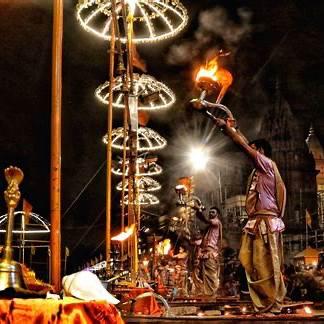

Other Sarnath Attractions & Places to Visit in Sarnath
Chaukhandi Stupa - Historic Sarnath Attraction
This distinctive brick structure marks the spot where Buddha first encountered his five disciples after attaining enlightenment. One of the key Sarnath attractions:
- Original Structure: Early Buddhist period (2nd century BCE)
- Octagonal Tower: Added by Mughal Emperor Akbar in 1589 CE in memory of his father Humayun's visit to Sarnath
- Architecture: Unique combination of Buddhist stupa and Mughal tower
- Height: Approximately 30 meters including the tower
Location: About 500 meters from main archaeological complex
Entry: Included in Sarnath site ticket
Photography: Allowed
Deer Park (Mrigadava)
The sprawling green sanctuary surrounding Sarnath's monuments recreates the ancient "Deer Park" atmosphere where Buddha taught. Modern features include:
- Wildlife: Spotted deer, peacocks, and various birds roaming freely
- Gardens: Manicured lawns and flower gardens
- Walking Paths: Peaceful trails for contemplative walks
- Benches: Shaded sitting areas under ancient trees
The serene park atmosphere helps visitors understand why this location was chosen for spiritual teaching.
Ancient Monastery Ruins
Scattered throughout the archaeological complex are foundations and walls of ancient Buddhist monasteries (viharas) where monks lived, studied, and meditated:
- Excavated Structures: Visible monk cells, assembly halls, and courtyards
- Dating: From 3rd century BCE through 12th century CE
- Layout: Typical Buddhist monastery design with central courtyard
- Artifacts: Some structures still show original flooring and water channels
Archaeological Excavation Sites
Active and completed excavation areas reveal multiple layers of Sarnath's history. Information boards explain the significance of different structures and time periods represented.
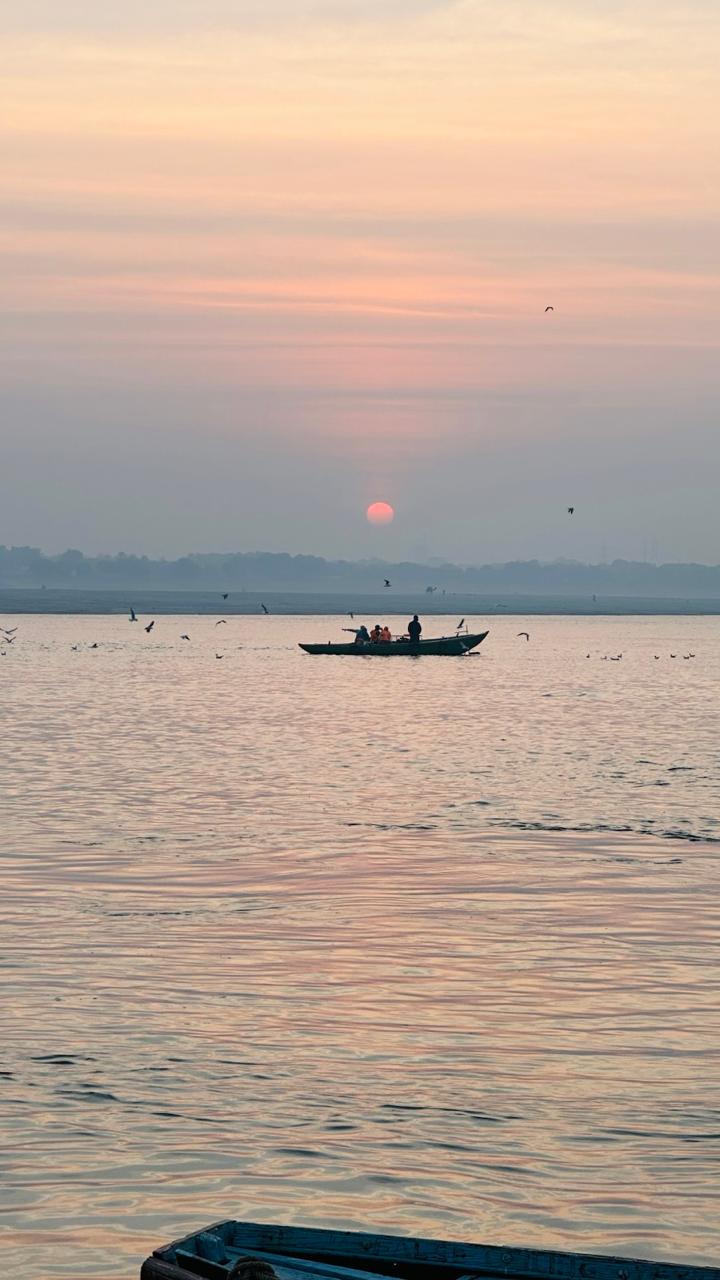
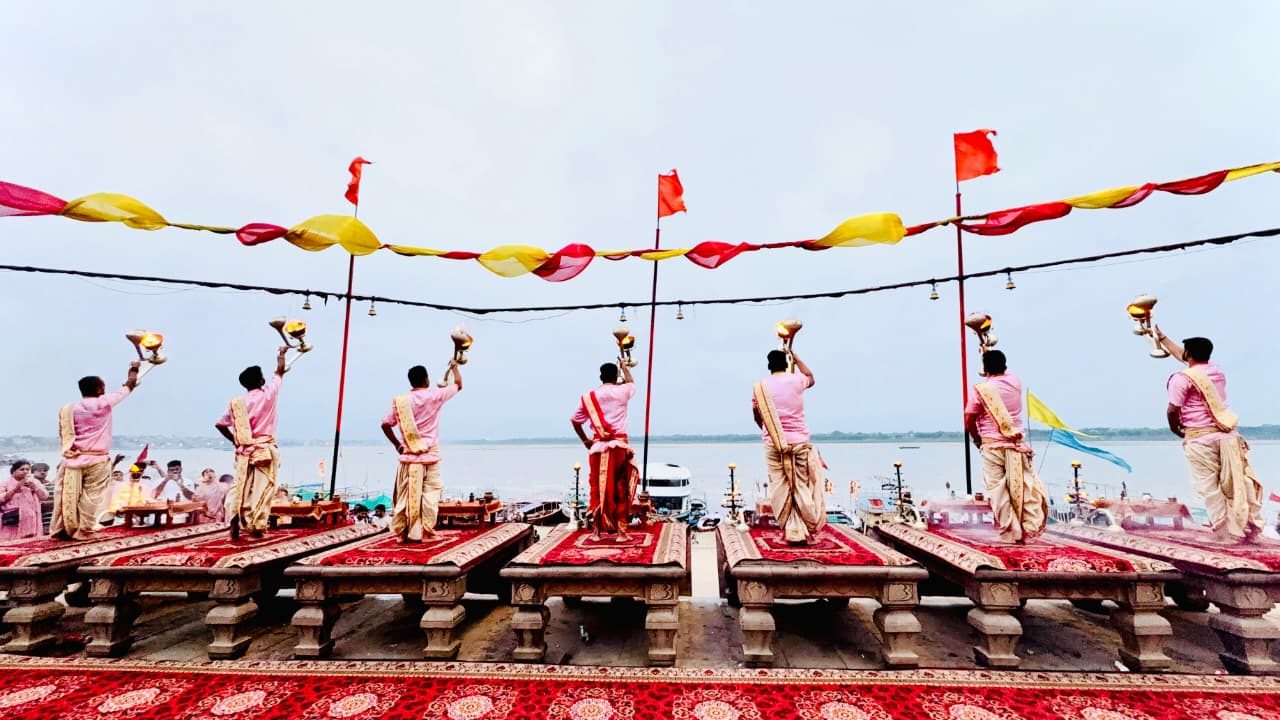
Sarnath Timing: When to Visit & Daily Schedule for Sarnath Visit
Sarnath Archaeological Site Timings (Dhamek Stupa & Ashoka Pillar)
Main Archaeological Complex (Dhamek Stupa, Original Ashoka Pillar, Ruins):
- Opening: 6:00 AM (sunrise)
- Closing: 6:00 PM (sunset)
- Open: Daily, including Fridays and national holidays
- Best Time for Sarnath Visit: 6:00-9:00 AM for peaceful atmosphere and photography
- Avoid: 12:00-3:00 PM (intense heat, especially April-June)
Sarnath Museum Timings
- Opening: 9:00 AM
- Closing: 5:00 PM (last entry 4:30 PM)
- Closed: Every Friday + major national holidays
- Best Time: 9:00-11:00 AM (fewer crowds, cooler)
Sarnath Buddhist Temple Timings
Mulagandha Kuti Vihar (Main Sarnath Temple):
- Morning: 4:30 AM - 11:00 AM
- Afternoon: 1:30 PM - 5:30 PM
- Evening prayers: Around 4:00-5:00 PM
Other Sarnath Temples (Thai, Tibetan, Sri Lankan):
- Generally open: 6:00 AM - 6:00 PM
- May close for lunch: 12:00-2:00 PM
- Check individual Sarnath Buddhist temples for exact timings
Recommended Visit Schedule for Complete Sarnath Visit
Full Sarnath Visit (3-4 hours) - All Major Sarnath Attractions:
- 6:00-7:30 AM: Arrive early, explore Dhamek Stupa and archaeological site in peaceful morning atmosphere
- 7:30-8:30 AM: Visit original Ashoka Pillar Sarnath (Ashok Stambh), Chaukhandi Stupa, monastery ruins
- 8:30-9:00 AM: Breakfast break at nearby cafes
- 9:00-11:00 AM: Sarnath Museum (opens at 9:00 AM) - see Lion Capital from original Sarnath pillar
- 11:00 AM-12:00 PM: Visit Sarnath Buddhist temples (Thai, Tibetan, Sri Lankan temples)
- Optional: Return 4:00-5:30 PM for main Sarnath temple (Mulagandha Kuti Vihar) evening prayers
Quick Sarnath Visit (2 hours minimum) - Essential Sarnath Attractions:
- 9:00-10:00 AM: Dhamek Stupa + Ashoka Pillar Sarnath + archaeological site
- 10:00-11:00 AM: Sarnath Museum
- 11:00-11:30 AM: Main Sarnath temple (Mulagandha Kuti Vihar Buddhist temple)
Best Time to Visit Sarnath: Weather & Seasons for Sarnath Visit
Optimal Season for Sarnath Visit (October - March)
Best Months: October, November, December, January, February, March
Weather Conditions:
- Temperature: 10°C to 25°C (50°F to 77°F)
- Humidity: Low and comfortable
- Rainfall: Minimal to none
- Skies: Clear and sunny
Why Best:
- Pleasant outdoor exploration of monuments
- Comfortable for walking between sites
- Excellent photography lighting
- All facilities fully operational
- Buddhist pilgrimage season (many international visitors)
Month-by-Month:
- October: Post-monsoon freshness, moderate temperatures (15-28°C)
- November-December: Peak season, coolest months, Dev Deepawali festival in Varanasi
- January-February: Very cool mornings (5-10°C), warm afternoons (20-25°C)
- March: Warming up but still pleasant (15-30°C)
Seasons to Avoid
Summer (April - June):
- Temperature: 30°C to 45°C (86°F to 113°F)
- Conditions: Extreme heat, scorching afternoons
- Challenges: Outdoor exploration very difficult, heat exhaustion risk
- Note: Only visit early morning (6:00-9:00 AM) if traveling during summer
Monsoon (July - September):
- Temperature: 25°C to 35°C (77°F to 95°F)
- Rainfall: Heavy showers, humid conditions
- Challenges: Slippery paths, muddy grounds, limited visibility
- Upside: Lush greenery, fewer tourists, lower prices
Best Time of Day
Early Morning (6:00-9:00 AM):
- Cool, peaceful atmosphere
- Soft golden light perfect for photography
- Fewer tourists
- Buddhist monks conducting morning rituals

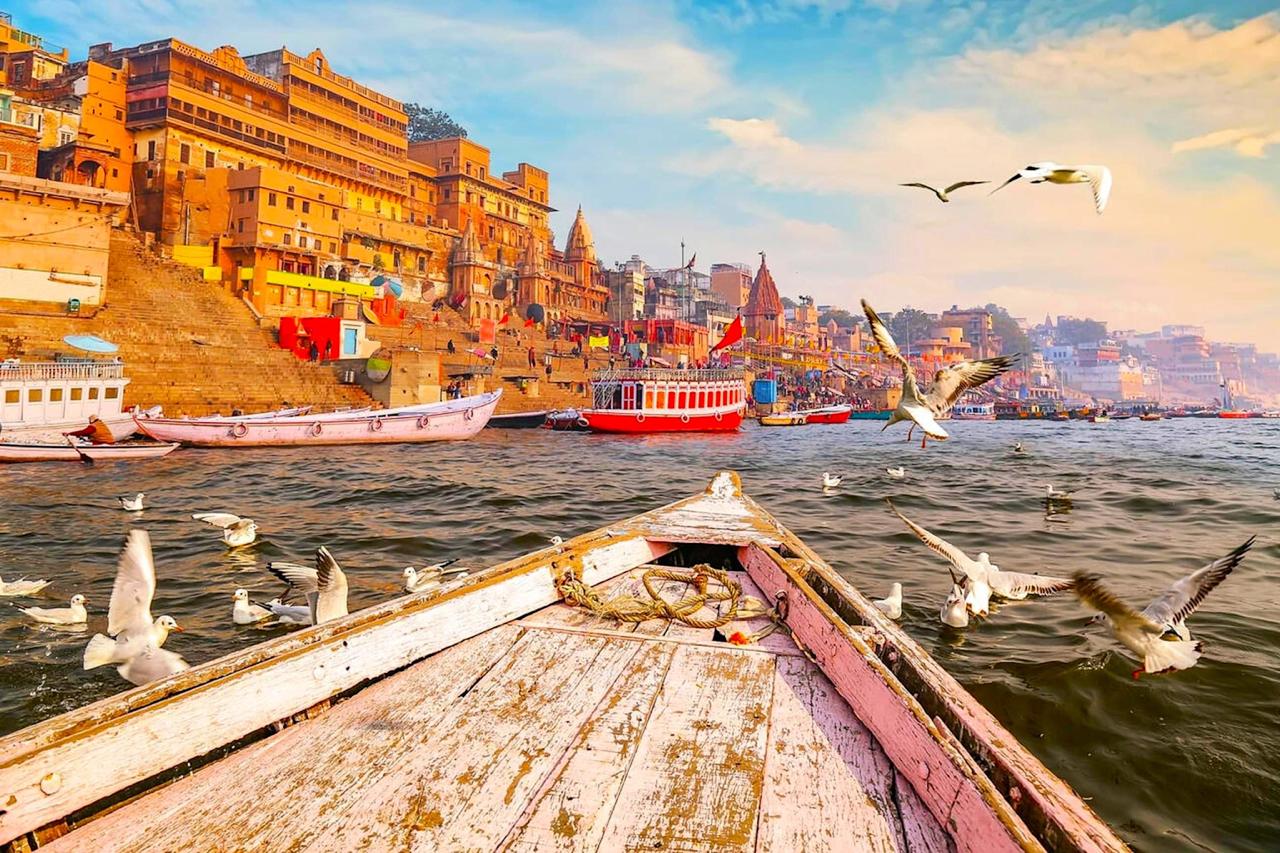
Late Afternoon (3:00-6:00 PM):
- Cooler temperatures (October-March only)
- Beautiful sunset lighting on monuments
- Evening prayers at temples
- Less crowded than morning
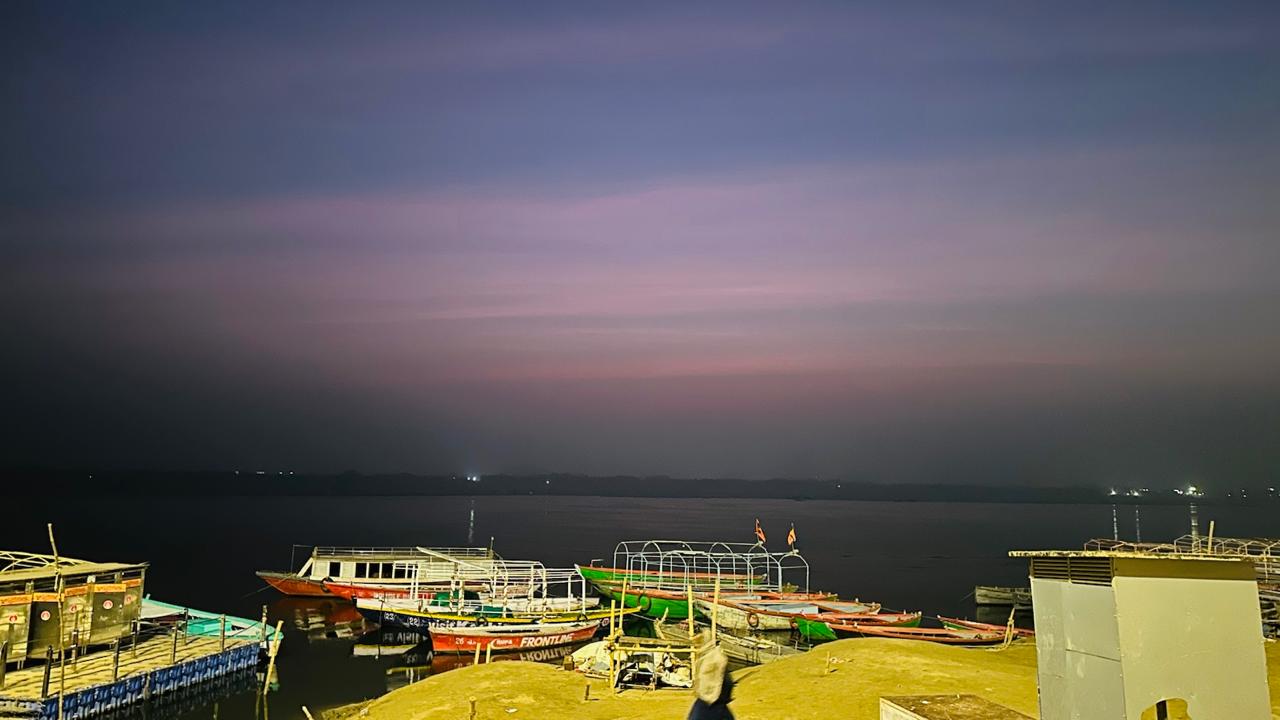
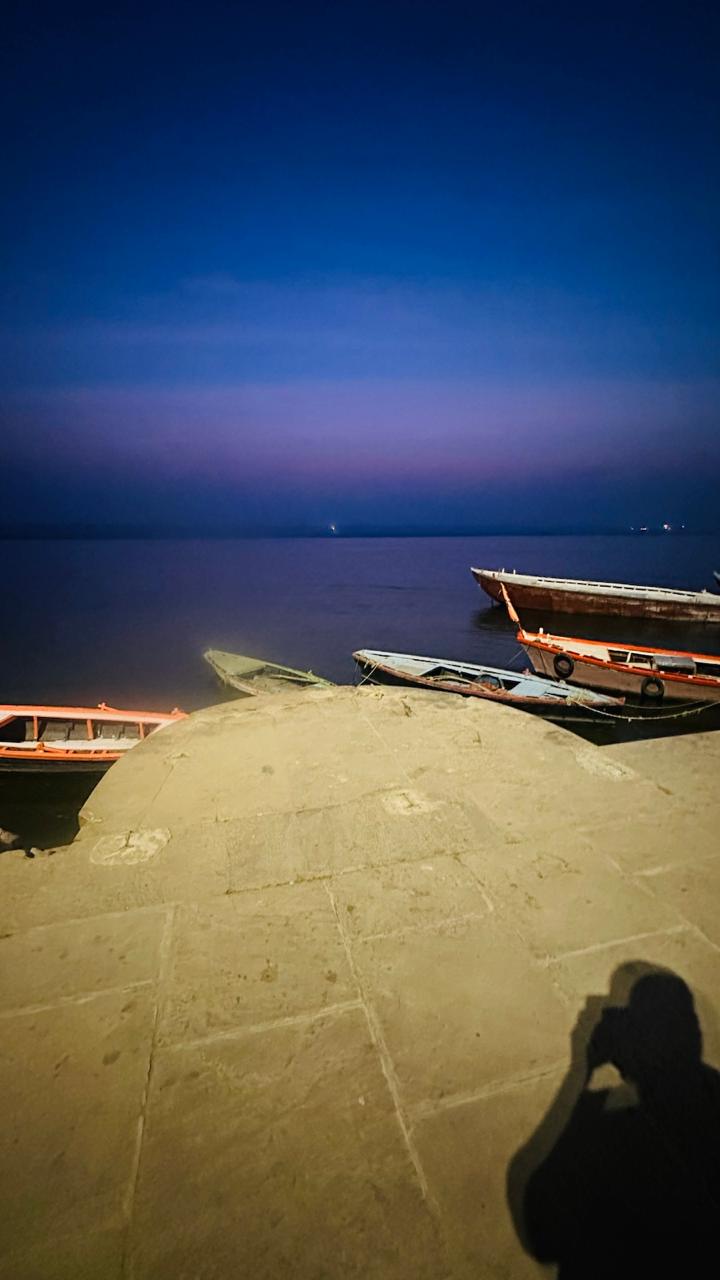
Avoid: 12:00-3:00 PM (harsh sunlight, extreme heat, crowded)
How to Reach Sarnath from Varanasi
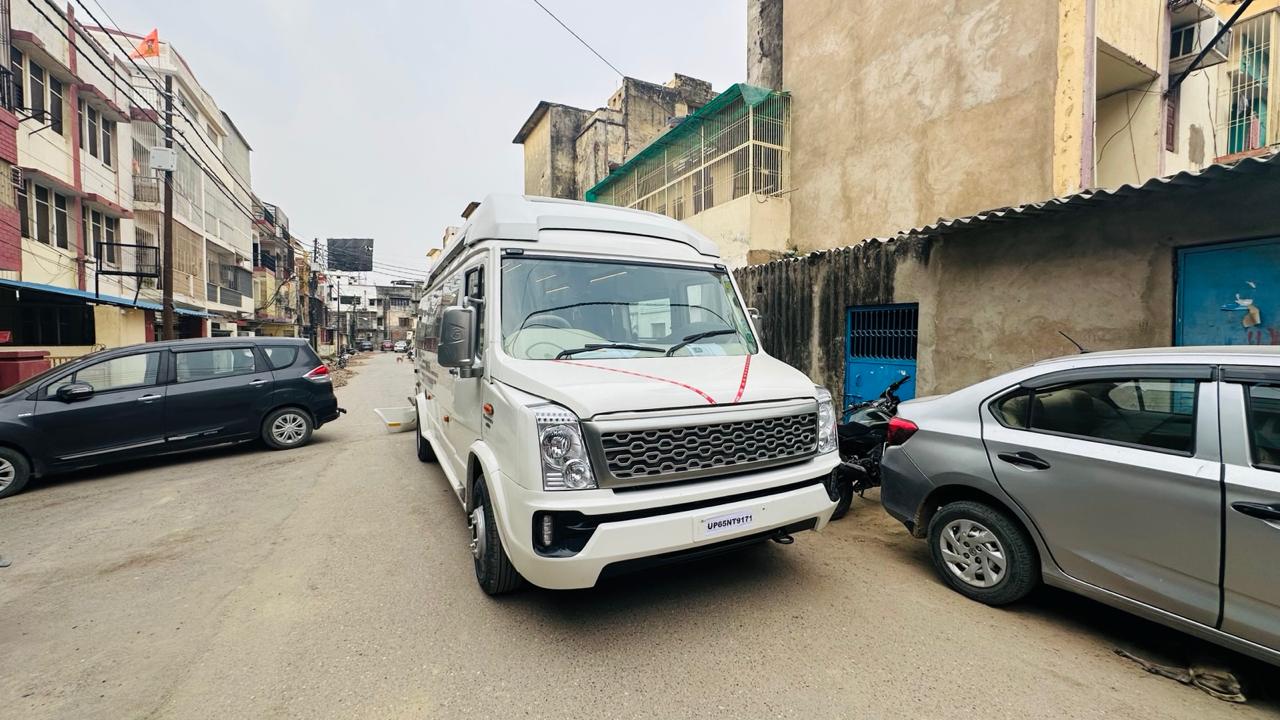

Distance & Travel Time
- Distance: 10-13 kilometers northeast of Varanasi city center
- Travel Time: 30-40 minutes (depending on traffic)
- Route: Via National Highway 31 (NH 31)
Transport Options from Varanasi to Sarnath
1. Taxi/Cab (Most Comfortable)
Pricing:
- One-way: ₹300-500
- Round-trip with 3-4 hours waiting: ₹600-1,200
- Full-day hire (Varanasi sightseeing + Sarnath): ₹2,500-3,500
Booking Options:
- Hotel concierge arrangements
- App-based rides: Ola, Uber
- Local taxi stands
- Online platforms: Kashi Taxi
Advantages:
- Door-to-door convenience
- AC comfort (important in summer)
- Flexibility in timing
- Can accommodate elderly/families
Book reliable Sarnath taxi: Varanasi to Sarnath Tempo Traveller
2. Auto-Rickshaw (Budget Option)
Pricing:
- One-way: ₹150-250
- Round-trip: ₹200-400 (negotiate in advance)
- Waiting charges: ₹50-100 per hour
Tips:
- Negotiate and fix price before starting
- Ask driver to wait or arrange return pickup time
- Not ideal for summer (no AC)
- Best for solo/couple travelers
3. Local Bus
Pricing: ₹20-40 per person
Route: State-run UP Roadways buses from Varanasi to Sarnath
Departure Points:
- Near Varanasi Junction railway station
- Various city bus stands
Frequency: Every 30-60 minutes
Disadvantages:
- Time-consuming with multiple stops
- Crowded conditions
- Fixed schedule limits flexibility
- Not tourist-friendly
4. Tempo Traveller (Groups)


Ideal For: Groups of 9-17 people, family tours, corporate outings
Pricing:
- 9-seater: ₹5,000-6,500 (full day Varanasi + Sarnath)
- 12-seater: ₹5,500-7,000
- 17-seater: ₹6,500-8,500
Advantages:
- Cost-effective for groups
- AC comfort
- Luggage space
- All travel together
- Professional drivers with route knowledge
Group Sarnath tours: Varanasi Day Tour Cab Charges
5. Self-Drive Options
Bike/Scooter Rental: ₹400-800 per day (requires valid driving license)

Car Rental: ₹1,500-2,500 per day
Route: NH 31 is well-marked and straightforward
Sarnath Entry Fees & Ticket Information (2025)
Archaeological Site Entry Fees
Dhamek Stupa, Ashoka Pillar, Ruins Complex:
Indians:
- Adults: ₹5-25 per person
- Children under 15: Free
SAARC/BIMSTEC Nationals:
- Adults: ₹20 per person
- Children under 15: Free
Foreign Tourists:
- Adults: ₹100-300 per person
- Children under 15: ₹50
Additional Charges:
- Still camera: ₹25
- Video camera: ₹100-200
Sarnath Museum Entry Fees
Museum Only:
- Indians: ₹5
- Foreign tourists: ₹100
- Children under 15: Free
Combo Ticket (Museum + Archaeological Site):
- Indians/SAARC/BIMSTEC: ₹20
- Foreign tourists: ₹250
- Children under 15: Free
Camera Fees:
- Still photography inside galleries: NOT ALLOWED
- Outdoor photography: Included in ticket
- Video recording: NOT ALLOWED inside
Buddhist Temples Entry
All Buddhist Temples: Free entry (donations welcome)
- Mulagandha Kuti Vihar: Free
- Thai Temple: Free
- Tibetan Temple: Free
- Sri Lankan Temple: Free
- Other international temples: Free
Where to Buy Tickets
Archaeological Site:
- Main entrance ticket counter near Dhamek Stupa
- Operating hours: 6:00 AM - 6:00 PM
- Cash and digital payments accepted
Museum:
- Separate ticket counter at museum entrance
- Operating hours: 9:00 AM - 5:00 PM
- Closed Fridays
Pro Tip: Buy the combo ticket (₹20/₹250) to save time and money if planning to visit both site and museum.
🚖 Need Reliable Transport for Your Sarnath Visit?
Planning your Buddhist pilgrimage? Kashi Taxi offers comfortable, affordable transport from Varanasi to Sarnath with experienced drivers who understand the spiritual significance of your journey.
Quick Pricing:
- Solo/Couple: Sedan ₹600-1,200 (round trip with 3-4 hours waiting)
- Small Group: Innova ₹800-1,500 (AC, 6-7 seats)
- Large Group: Tempo Traveller ₹5,500-8,500 (9-17 seats, full day)
Includes: AC vehicle, professional driver, all fuel/tolls, flexible timing, hotel pick-up/drop
📱 WhatsApp for Instant Quote: +91 94503 01573
📞 Call Now: +91 94503 01573
Book Now: Varanasi to Sarnath Transport | Buddhist Circuit Tours
27+ years serving Buddhist pilgrims | 4.8★ Google Rating | Police-verified drivers | No hidden charges








